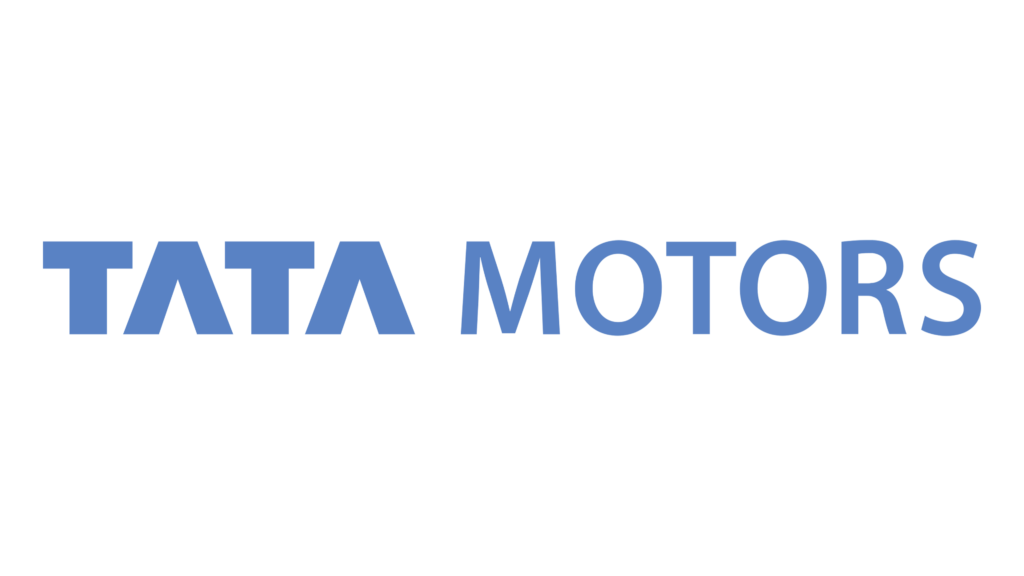In this article, we explore the Tata Motors Business Model to explain and understand how the Business Model of Tata Motors is structured and to learn about how Tata Motors makes money.
Tata Motors, a leading global automobile manufacturing company, is a division of the Tata Group, which was founded in 1868 by Jamsetji Tata. As one of the most successful and innovative businesses in India, Tata Motors has evolved into a key player in the global automotive market. This article will analyze the business model of Tata Motors using Alexander Osterwalder’s Business Model Canvas, a strategic management tool that allows entrepreneurs and organizations to visualize, design, and innovate their business models. We will start with a brief introduction to the company, its founders, and the story of how and why it was started, before diving deep into the nine building blocks of the business model canvas.
Tata Motors: The Beginning
Established in 1945, Tata Motors Limited (formerly known as Tata Engineering and Locomotive Company) began its journey as a locomotive manufacturer. The company was founded by Jehangir Ratanji Dadabhoy Tata, or J.R.D. Tata, a visionary entrepreneur and the second chairman of the Tata Group. A pioneer of Indian industry, J.R.D. Tata was instrumental in laying the foundations for the Tata Group’s diverse business portfolio, which includes steel, power, hospitality, chemicals, and telecommunications.
J.R.D. Tata’s goal was to empower India and its people by creating a self-reliant manufacturing sector that could contribute to the nation’s economic growth. At the time, India was still recovering from the impacts of colonialism, and the country’s industrial sector was in dire need of revitalization. Tata Motors’ inception was an answer to that call, and under J.R.D. Tata’s leadership, the company played a significant role in the country’s industrialization efforts.
As Tata Motors evolved, the company ventured into the commercial vehicle market in 1954 through a collaboration with Daimler-Benz AG, a partnership that lasted until 1969. This marked the beginning of Tata Motors’ foray into the automotive industry, and from there, the company expanded its portfolio to include passenger vehicles, buses, trucks, and defense vehicles.
Osterwalder’s Business Model Canvas: Analyzing Tata Motors
Now that we have a basic understanding of Tata Motors’ history and founding vision, let’s delve into the company’s business model using Osterwalder’s Business Model Canvas. This framework consists of nine building blocks, which we will discuss in detail.
- Customer Segments
Tata Motors serves a diverse range of customers, which can be segmented into the following categories:
- Individual customers: Tata Motors offers a wide array of passenger vehicles catering to various segments, from entry-level hatchbacks to luxury sedans and SUVs. The company’s customer-centric approach has enabled it to capture a significant market share in the Indian automotive industry.
- Commercial vehicle customers: Tata Motors is a major player in the commercial vehicle segment, offering light, medium, and heavy-duty trucks, buses, and special purpose vehicles. The company’s products cater to businesses in various sectors, including construction, mining, logistics, and transportation.
- Defense and government customers: Tata Motors manufactures defense vehicles and equipment for the Indian Armed Forces and other government agencies, contributing to national security and infrastructure development.
- Value Proposition
Tata Motors’ value proposition revolves around the following key elements:
- Affordability: Tata Motors is known for producing cost-effective vehicles that cater to the budget-conscious consumer. The company’s entry-level vehicles, such as the Tata Nano, were designed to make car ownership accessible to the masses.
- Quality: Despite offering affordable products, Tata Motors does not compromise on quality. The company’s vehicles undergo rigorous testing and quality control processes to ensure high quality performance, safety, and reliability. Tata Motors has consistently received awards and accolades for its products, which demonstrate the company’s commitment to quality.
- Innovation: Tata Motors is an innovation-driven company that invests heavily in research and development. The company has pioneered several groundbreaking technologies, such as the Revotron and Revotorq series of engines, which offer better performance, fuel efficiency, and reduced emissions. Additionally, Tata Motors is a leader in electric vehicle technology, with models like the Tata Nexon EV, which has gained significant market traction.
- After-sales service and support: Tata Motors has a vast network of service centers and spare parts distribution points, which ensure that customers receive timely and efficient after-sales support. The company’s customer-centric approach is evident in its efforts to provide a seamless ownership experience.
- Channels
Tata Motors employs multiple channels to reach its target customers. These channels include:
- Dealerships: Tata Motors has an extensive network of dealerships across India and in various international markets. These dealerships showcase the company’s products and serve as a primary touchpoint for sales and after-sales support.
- Online platforms: Tata Motors has a strong online presence, with a user-friendly website and social media accounts that provide information about its products, offers, and promotions. The company also leverages digital marketing channels to reach a broader audience and engage with potential customers.
- Strategic partnerships: Tata Motors has formed strategic alliances with global automotive giants such as Jaguar Land Rover, which allows the company to expand its product portfolio and gain access to new technologies.
- Customer Relationships
Tata Motors’ customer relationships are built on trust, transparency, and a commitment to delivering an exceptional ownership experience. The company has implemented various initiatives to strengthen customer relationships, such as:
- Customer feedback: Tata Motors actively seeks customer feedback through surveys, social media interactions, and dealership visits to understand customer needs and expectations better.
- After-sales support: The company offers comprehensive after-sales services, including warranty programs, roadside assistance, and maintenance packages, which ensure customer satisfaction and foster loyalty.
- Customer-centric innovations: Tata Motors continuously invests in technology and design to enhance the driving experience and cater to evolving customer preferences.
- Revenue Streams
Tata Motors’ primary revenue streams include:
- Vehicle sales: The sale of passenger vehicles, commercial vehicles, and defense vehicles contributes to the majority of the company’s revenue.
- Spare parts and accessories: Tata Motors generates revenue from the sale of spare parts, accessories, and merchandise related to its vehicles.
- Financing and insurance: The company offers vehicle financing and insurance solutions through its subsidiaries and partnerships with financial institutions, generating additional income.
- Service and maintenance: Tata Motors earns revenue from the service and maintenance of its vehicles through its dealership network and authorized service centers.
- Key Resources
Tata Motors’ key resources include:
- Manufacturing facilities: The company operates multiple manufacturing plants across India and in other countries, enabling it to produce a wide range of vehicles and components.
- Research and development: Tata Motors invests heavily in R&D, with facilities such as the Tata Motors European Technical Centre and the Engineering Research Centre in India. These centers play a crucial role in driving innovation and product development.
- Skilled workforce: Tata Motors employs a diverse and skilled workforce, including engineers, designers, technicians, and sales professionals, who contribute to the company’s success.
- Brand and reputation: Tata Motors’ strong brand identity and reputation for quality and innovation have enabled it to gain a competitive advantage in the market.
- Key Activities
Tata Motors’ key activities include:
- Vehicle design and development: The company is continuously involved in the design and development of new vehicle models, technologies, and features to cater to changing customer preferences and market trends.
- Manufacturing and assembly: Tata Motors operates a highly efficient manufacturing and assembly process, which enables it to produce vehicles at scale and meet the growing demand.
- Marketing and sales: The company invests in various marketing and sales initiatives, such as advertising campaigns, product launches, and promotional events, to create awareness and generate interest in its products.
- After-sales support: Tata Motors is dedicated to providing exceptional after-sales support to its customers through its extensive network of service centers and spare parts distribution points.
- Strategic partnerships and acquisitions: The company actively pursues strategic partnerships and acquisitions to expand its product portfolio, gain access to new technologies, and strengthen its market presence.
- Key Partnerships
Tata Motors has forged several key partnerships over the years, which have been instrumental in its growth and success:
- Daimler-Benz AG: As mentioned earlier, Tata Motors’ partnership with Daimler-Benz AG in the 1950s enabled the company to enter the commercial vehicle market and laid the foundation for its future growth.
- Fiat: Tata Motors formed a joint venture with Fiat in 2007 to manufacture and distribute Fiat cars in India, which helped the company expand its product offerings and leverage Fiat’s technological expertise.
- Jaguar Land Rover: The acquisition of Jaguar Land Rover in 2008 provided Tata Motors access to cutting-edge automotive technologies and a strong global brand, significantly enhancing its position in the premium vehicle segment.
- Collaborations with suppliers and technology providers: Tata Motors collaborates with various suppliers, technology providers, and research institutions to access new technologies and enhance its product development capabilities.
- Cost Structure
Tata Motors’ primary cost components include:
- Manufacturing and production: The company incurs significant costs related to vehicle manufacturing and production, such as raw materials, labor, and factory overheads.
- Research and development: Tata Motors invests heavily in R&D, which contributes to its overall cost structure.
- Marketing and sales: The company’s marketing and sales initiatives, such as advertising campaigns, product launches, and promotional events, entail considerable expenses.
- After-sales support: Tata Motors bears the cost of providing after-sales support to its customers, including warranty programs, roadside assistance, and maintenance services.
- Administration and general expenses: The company incurs various administrative and general expenses, such as salaries, office rent, utilities, and taxes, which form part of its cost structure.
Tata Motors, a visionary Indian company, has grown into a global automotive powerhouse, driven by its commitment to quality, affordability, and innovation. By analyzing the company’s business model through the lens of Osterwalder’s Business Model Canvas, we gain valuable insights into the key factors that have contributed to Tata Motors’ success. These insights can be useful for entrepreneurs and business leaders looking to learn from Tata Motors’ experience and apply these lessons to their ventures.
From the customer-centric approach to the relentless pursuit of innovation and strategic partnerships, Tata Motors has demonstrated that a clear vision, strong values, and a focus on long-term growth can propel a company to great heights in the competitive global market. As the company continues to evolve and adapt to the rapidly changing automotive landscape, Tata Motors serves as an inspiring example of resilience, determination, and success in the world of business.
Did you know? Corporate teams like to use our coworking space in Bangalore.
Learn more about our coworking space on our YouTube channel Work Theater Studios where we talk about a variety of topics including personal finance, entrepreneurship, business and life.
Did you know? We also have a private theatre in Bangalore.




